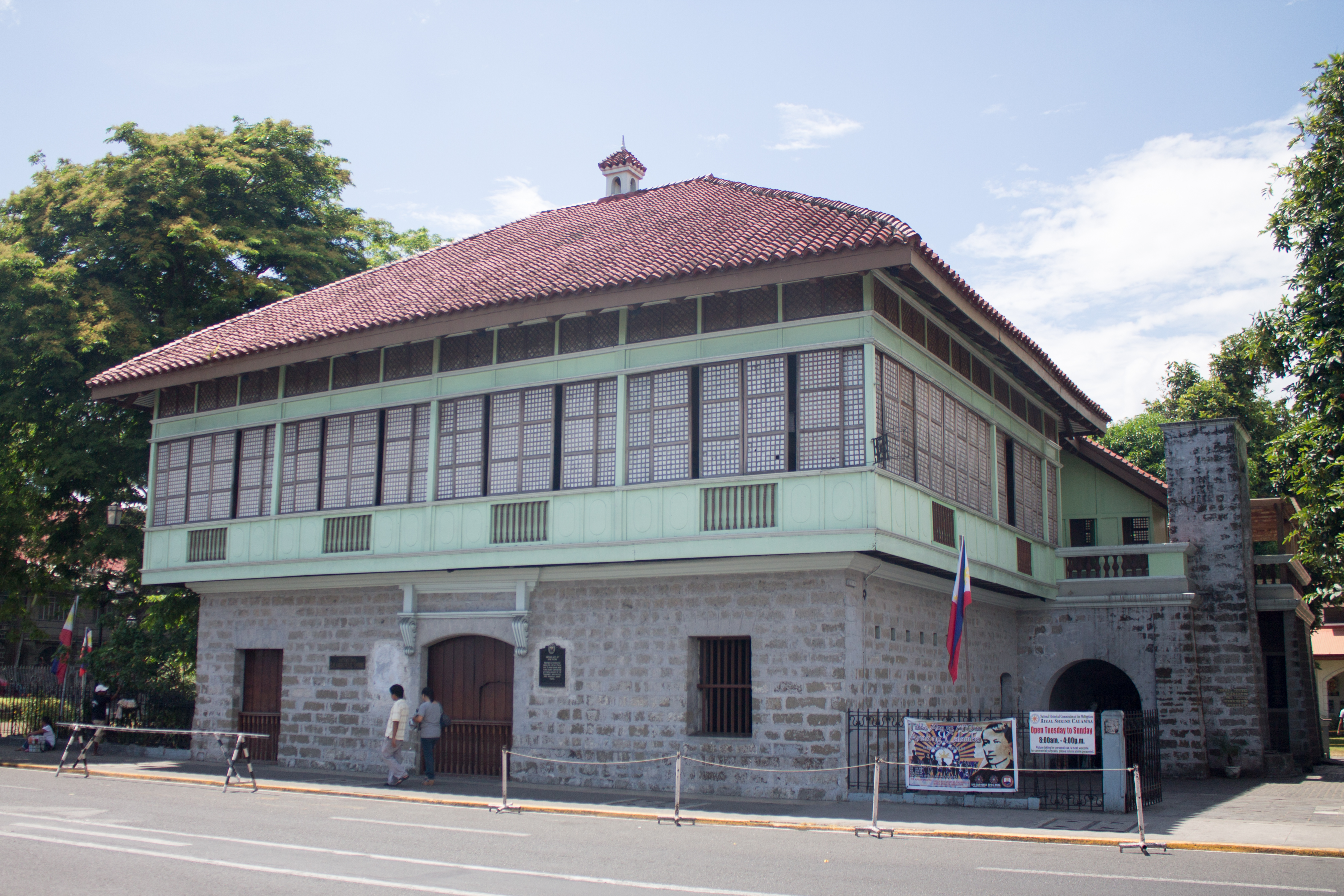Ventanilla (Philippine Architecture) on:
[Wikipedia]
[Google]
[Amazon]
 In
In
File:Street view of Kapitan Moy Bdlg..jpg, Side view of the wooden ventanilla
 In
In Philippine architecture
The architecture of the Philippines (Filipino: ''Arkitekturang Pilipino'') reflects the historical and cultural traditions in the country. Most prominent historic structures in the archipelago are influenced by Austronesian, Chinese, Spanish, ...
, the ventanilla is a small window or opening below a larger window's casement, created—often reaching the level of the floor—to allow either additional air into a room during hot days or some air during hot nights when the main window's panes are drawn. It also allows for more light to strike the floor.
The ventanilla is often used on upper floor windows, as in the ''bahay na bato
''Bahay na bato'' (Tagalog language, Tagalog, literally "house of stone", also known in Visayans, Visayan as ''balay na bato'' or ''balay nga bato; in Spanish language, Spanish as Spanish Colonial architecture, Casa Filipino'') is a type of buil ...
''. As the lower part of a composite window, its larger upper part is typically a window with sliding capiz-shell panes. The ventanilla is just under this upper large window's sill and is typically made with sliding panel-covers behind balusters or grills.
Bobby Mañosa's traditional methods for his design of the Coconut Palace
Coconut Palace, also known as Tahanang Pilipino (), is a government building located in the Cultural Center of the Philippines Complex in Manila, Philippines. It was the official residence and the principal workplace of the vice president of th ...
is considered as displaying a fine example of how ventanillas can be applied in modern Philippine architecture.
Gallery
balusters
A baluster is an upright support, often a vertical moulded shaft, square, or lathe-turned form found in stairways, parapets, and other architectural features. In furniture construction it is known as a spindle. Common materials used in its cons ...
of the Kapitan Moy Residence
Kapitan Moy Building, situated in Marikina, Metro Manila, the Philippines, is the 200-year-old house of Don Laureano Guevarra (4 July 1851 – 30 December 1891), known as the founder of the Marikina shoe industry. Also known as ''Kapitan Moy'', h ...
.
File:Bahay Nakpil-Bautista -View from the street.jpg, Opened ventanillas at the Bahay Nakpil-Bautista
The Nakpil-Bautista House ( tl, Bahay Nakpil-Bautista) is a ''bahay na bato'' ancestral home found in the district of Quiapo, Manila, the Philippines. It was built in 1914 by Arcadio Arellano. The house originally sat on two lots, having a total ...
, boasting their lyre-shaped grilles.
File:Apolinario Mabini House 1.jpg, The large front windows of Apolinario Mabini
Apolinario Mabini y Maranan (, July 23, 1864 – May 13, 1903) was a Filipino revolutionary leader, educator, lawyer, and statesman who served first as a legal and constitutional adviser to the Revolutionary Government, and then as the first ...
's ''bahay kubo
The ''bahay kubo'', also known as ''payag'' (Nipon) in the Visayan languages and, is a type of stilt house indigenous to the Philippines. It often serves as an icon of Philippine culture. The house is exclusive to the lowland population of ...
'' house augmented by ventanillas.
File:CasaManilajf1568 04.JPG, Ventanillas of Casa Manila
Casa Manila is a museum in Intramuros depicting colonial lifestyle during Spanish colonization of the Philippines.
The museum is the imposing stone-and-wood structure c. 1850, one of the grand houses in Barrio San Luis (one of the four original ...
.
File:Tampuhan by Juan Luna.jpg, Juan Luna
Juan Luna de San Pedro y Novicio Ancheta (, ; October 23, 1857 – December 7, 1899) was a Filipino painter, sculptor and a political activist of the Philippine Revolution during the late 19th century. He became one of the first recogniz ...
's painting ''Tampuhan
Silent treatment is the refusal to communicate verbally and electronically with someone who is trying to communicate and elicit a response. It may range from just sulking to malevolent abusive controlling behaviour. It may be a passive-aggressi ...
'' depicts a couple beside a large ventanilla.
References
{{reflist Architecture in the Philippines Houses in the Philippines Bahay na bato Vernacular architecture